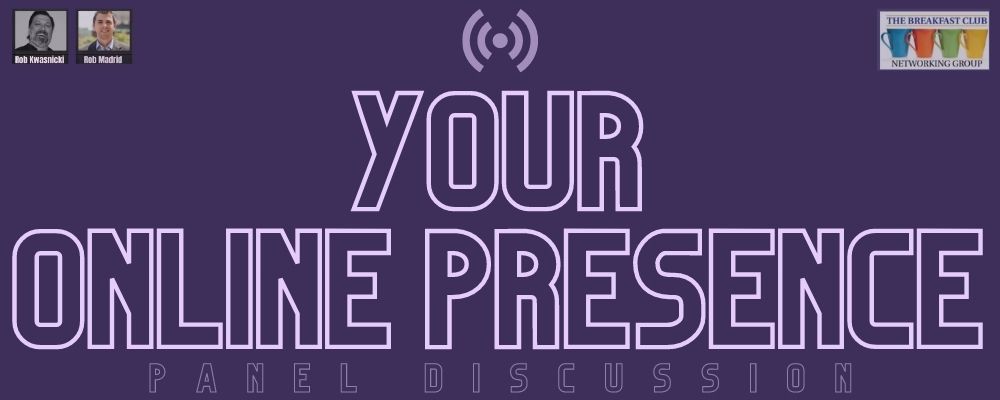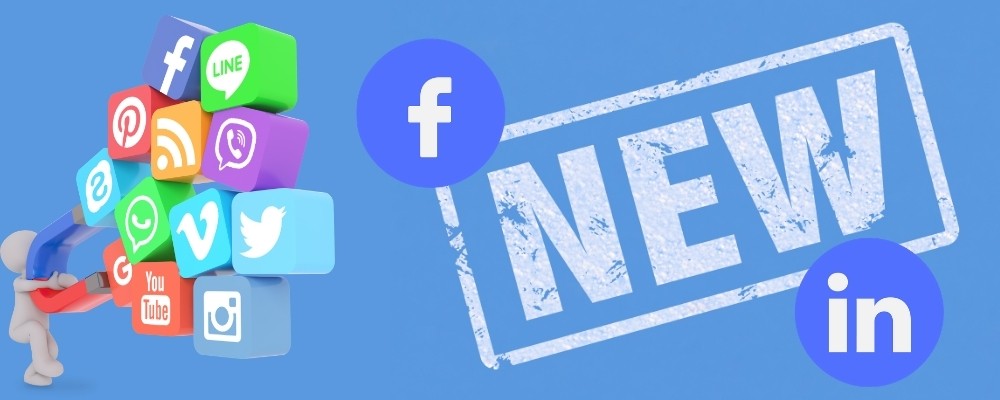Your Online Presence Panel Discussion
Digital Marketing Partner founder, Robert Kwasnicki, and digital marketer, Rob Madrid, co-hosted a panel discussion for small businesses about optimizing their online presence. The panel discussion was an overview primer on specific topics like SEO, digital listings and social media.
- Top-3 things you need to do today to be well-positioned and be found online
- Demystifying SEO
- The importance of content
- Social Media – Should you business be there?
SEO (Search Engine Optimization) has a technical component and basically includes any work done to increase the number of relevant organic visitors to your website, including work done on your website and off your website. SEO is a loaded initialism because it can mean different things to different people, including different things to different SEO companies. We prefer to talk about your “digital presence” – which will inherently include boosting your SEO, but there are additional items related to SEO that are not included here.
Technical SEO Summary
- Site Security – Is your site secure? Make sure you have an SSL Certificate
- “https://” = you have an SSL Certificate. Also check browser address bar – if there is a lock icon to the left of the URL (web address), then your site is secure.
- Speed – good for both users and for Google – Use the Google Developers tool to check your site
- Mobile Friendly – Check your site using Google’s Mobile friendliness tool
- Register with digital directories – Google My Business, Bing Places for Business, Manta, etc.
- Make sure Name Address Phone Number (NAP) is consistent and accurate on all your digital assets
- For example, if you use “St” for street, then use “St” consistently; If you use a phone number format like, “(800) 555-1212”, use it consistently and not variations like, “800.555.1212” or “800-555-1212”. If your business is Widget LLC, choose a consistent format like, “Widget LLC” or “Widget, LLC” or “Widget”.
- Utilize Google My Business as a starting place, and link to Bing Places
- Consider the longevity of your domain – Make sure your domain (URL) is owned long term (Avoid annual renewals and opt for 3-year or longer renewals)
- Where can you obtain a domain?
- BlueHost, GoDaddy, Network Solutions, NameCheap, etc.
Make Your Presence Useful to Customers and Google
- Provide useful, informative, and engaging content on a regular basis
- Unique content
- How long should it be (for blogs?
- We suggest 300-500 word minimum, but it is fine to have more to say! Just don’t bury your purpose or say more than you have to
- Up to 2000 words is fine as long as you have engaging content
- TIP: If long, consider a “Part 1” and a “Part 2”, essentially 2 pages for 1 blog (improves Page Views)
- We suggest 300-500 word minimum, but it is fine to have more to say! Just don’t bury your purpose or say more than you have to
- Write Title Tags and Meta Tags and Descriptions
- Easy thing built into most Content Management Systems (CMS) – like WordPress – to make your pages easily readable to Google
- Meta tags are the words Google will grab first and put under your search results listing (better than Google grabbing random text on your page) and they also help Google understand what the content is.
- Linking
- Easy fix: Set up internal links on your website – if you mention a service in a blog, link to that service’s page on your website in the text. For example, let’s refer you to our previous article about SEO titled, “9 SEO Tips for Beginners“, and now we have an internal link on this article.
- Backlinking: Work with your partners, vendors, or customers to get links to your site on their site. This can give you a valuable boost of E-A-T (expertise, authoritativeness, and trustworthiness) according to Google
- Other Media
- Images
- Use your own images whenever you can
- If you use other images, make sure you are complying with copyright laws – use fully-licensed stock image services like Adobe Stock, Shutterstock, etc, and understand what their licenses allow.
- TIP: Consider CreativeCommons.org for creative – this is a “community” source of photos and images that are free to use with flexible licensing, but do have attribution requirements.
- Write alt-descriptions/image alt-tags – usually can be done through your Content Management System
- Images
- Video
Social Media
- Should you be on EVERY Platform?
- How often should I post?
- Better question: Am I posting something of value that will result in engagement on the post (Likes, Shares)?
- At least Weekly if you can – Several times per week is better
- Only post when you have something valuable to say – 10% or less will see business posts that don’t get reactions and shares
- 10% rule – no more than 10% of your posts should be “salesy”. Even less if you can.
- Our short “Give. Give. Give.” article may be of interest.
Final Words
NAP – Name. Address. Phone. – Keep these consistent across all digital assets, including the formatting. For example: (860) 555-1212 is not the same (to Google) as 860-555.1212. “Main St.” is not the same as “Main Street”, professional credentials like “Dr” should be consistent across all digital assets/listings (not “Dr.”, then “Dr”, then “Doctor” – or “St.”, then “Street”)
Look at all your digital assets, listings and social pages as being interconnected pieces of your overall digital “ecosystem” – each supporting and working with the other.
For example, if you are planning an article about non-GMO widgets because you noticed on Google Trends that the topic is trending, perhaps your social media posts, in the days preceding your article, can be about widgets. The day you publish your article, share it on your social pages and on your Google My Business account. Then, if you have a YouTube account, you produce a short video reviewing a couple non-GMO widgets.
Consistency extends beyond “N.A.P.” and should include your logos and social page cover images and profile images, and those should be consistent with your website. Your digital presence and your analog assets – business cards, brochures, flyers – must also be consistent with each other. Build your brand with consistency over all your print and digital assets.
This Zoom Panel Discussion was produced by the Breakfast Club Networking Group (CT). A follow-up panel discussion may be scheduled to dive deeper into any of the topics discussed.




